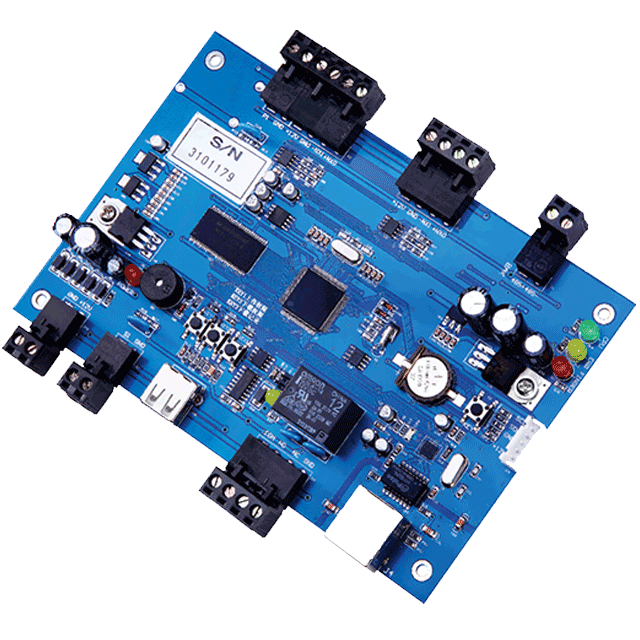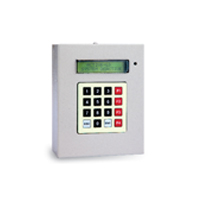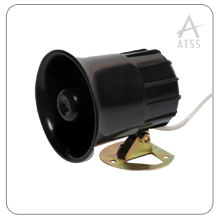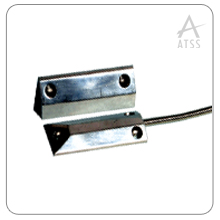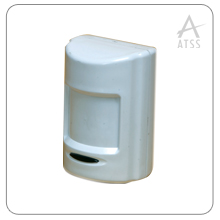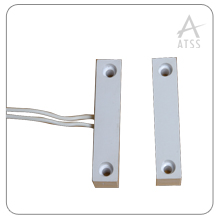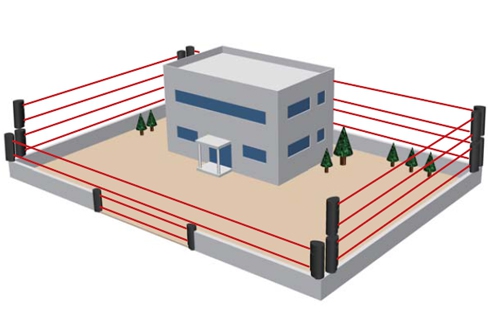-
2 Fingerprint Reader Connectivity
-
ATSS BURGLAR ALARM ACTIVE 108
-
ATSS BURGLAR ALARM ACTIVE 207
-
ATSS BURGLAR ALARM\FIRE ALARM AUTO DIALER ACTIVE LD
-
ATSS LARGE HOOTER
Siren/Hooter connect to the control panel to raise an alarm to threaten the intruder run away.
The External Siren installed and wired to the Control Panel will activate in the event of an intrusion with the system armed. In the event of the cable to the Siren Unit being deliberately cut an alarm will be generated at the control panel, provided that the tamper circuit to the Siren has been connected.
Siren should be located as high as possible in a prominent position so that it can be easily seen and heard. When running the cable to the siren, the cable should pass through a hole in the external wall and enter through the rear of the casing.
Sounds generated by the system can be made different for various system alarms. In addition, the type of sound can help to scare away an intruder or evacuate the building during a fire.
During a burglary the siren’s sound is startling, but more effectively, filling the room with sound blocks the intruder’s ability to hear police sirens approaching. This lack of ability to hear into the distance raises the panic level of an intruder most likely making them want to leave. Consider outfitting the system with indoor sounders to fill the room with noise and outdoor sirens to call for the immediate attention of neighbours.
-
ATSS OVERHEAD MOUNTED SWITCH
Roller shutter contacts are very similar to door contacts and work in exactly the same way. The difference is that roller shutter contacts are more heavy duty.
-
ATSS PANIC SWITCH
A Panic button is a button that, if pressed, will trigger the alarm. Panic button will trigger the alarm 24 hours a day, 7 days a week, even if the alarm is deactivated. Panic buttons are often located near entry/exit door and bedrooms.
-
ATSS PIR MOTION SENSOR
Passive Infrared (PIR) Motion Sensors protect space by ‘looking’ for changes in infrared (heat) energy levels caused by movement of an intruder.
The passive infrared detectors are passive devices. i.e., they do not transmit any form of energy. When a person enters and moves within the detecting zone, his body which is at its normal temperature of 98.6 degree F., radiates more (or less) thermal energy than the surroundings and such minute difference in thermal energy is detected by the PIR.
In simple words, PIR keeps a picture of t
-
ATSS RECESSED MOUNT SWITCH
Recessed has the magnet placed in a 3/8″ hole drilled into the edge of the door,and the switch in another hole drilled into the door casing, wiring concealed in the wall.
Recessed Magnetic Door Sensors are typically used on closed circuit alarm systems. These devices work by magnets. These magnet sensors are mounted inside of the door and inside of the frame. When the door is closed and the magnets are lined up, the switch is closed. These devices are made to be ascetically pleasing, since they cannot been seen and also to be less prone to tampering. Below are the pros and the cons of using this type of door contact.
Pros of Recessed Magnetic Door Contacts
Less Risk of Tampering: since these devices are installed inside the door and frame they are far less likely to be tampered with since they cannot be seen when the door is closed. Invisible when door is closed: This makes for the devices to be more aesthetically pleasing than the surface mounted door contacts. These are the standard type of contacts used in residential settings for this reason.
Cons of Recessed magnetic Door Contacts
Harder to Install than surface contacts: Since they have to be installed the door and the frame, they are more difficult to install than the surface contacts which stick right onto the outside.
Alternatives
The other alternative to using recessed door contacts is to used surface door contacts. These are typically a little cheaper and easier to install than the recessed door contacts, but they are visible and more prone to tampering.
-
ATSS SURFACE MOUNT SWITCH
The surface mount is as its name implies, mounted on the surface of the door/window with wiring exposed. A door contact is the most basic of alarm triggers.
These are just magnetic strips that are in contact while the door is closed but break the circuit when the door is opened. Then it triggers the alarm.
Surface Mount Magnetic Sensor are used on closed circuit alarm systems. These devices work through a magnets, so when the magnets are lines up, the switch is closed. These types of devices are meant to be an easy to install option for windows and doors that open. Below are the pros and cons of these devices and alternatives to using them.
Pros of Surface Mount Magnetic Door Contacts
Ease of installation: These devices are typically mounted through an adhesive that sticks to the door and the frame. They can also be mounted with wood or sheet screws depending upon your door or window you plan on installing it on.
Cheap: These devices are normally very cheap, the biggest cost with them is the installation and wiring if they are used on hardwired alarm systems.
Reliable wireless devices an option: There are reliable wireless surface mounts that are more expensive than the hardwired ones, but can allow you to quickly install them without running wires and paying someone house of installation fees.
Cons of Surface Mount Magnetic Door Contacts
Visible: They are not aesthetically pleasing to the eye in residential settings.
Subject to tampering: Since they are visible, it makes the more subject to tampering with. It can also alert burglars of the type of contact sensors you use and they may be able to find a window or door without them since they know they are not mounted inside of the door or windows.
Alternatives
Since the biggest downfalls of these devices are that they are not aesthetically pleasing and are subject to tampering there is a device called a recessed contact. This device woks pretty much the same way as the surface contact but the magnets are installed inside the frame and the door.
-
BEAM SENSOR-ATSS
Photoelectric beam systems detect the presence of an intruder by transmitting visible or infra red light beams across an area, where these beams maybe obstructed. To improve the detection surface area, the beams are often employed in stacks of two or more. However, if an intruder is aware of the technology’s presence, it can be avoided.
The technology can be an effective long-range detection system, if installed in stacks of three or more where the transmitters and receivers are staggered to create a fence-like barrier. Systems are available for both internal and external applications. To prevent a clandestine attack using a secondary light source being used to hold the detector in a ‘sealed’ condition whilst an intruder passes through, most systems use and detect a modulated light source.
-
Biometric + RFID Attendance System

